Test: Changing Cultural Traditions- Source Based Type Questions - MPTET MCQ
15 Questions MCQ Test - Test: Changing Cultural Traditions- Source Based Type Questions
Direction: Look at this picture and study the extract carefully and answer ANY THREE of the following questions by choosing the correct option:
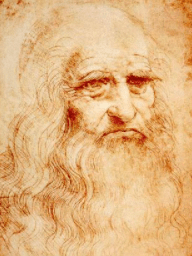
The self-portrait is by Leonardo da Vinci (1450 -1519) who had an amazing range of interest from botany and anatomy to mathematics and art. He painted the Mona Lisa and The Last Supper.
One of his dreams was to be able to fly. He spent years observing birds in flight and designed a flying machine.
He signed his name Leonardo da Vinci disciple of experiment.
Q. What was the area of interest of Leonardo da Vinci?

Direction: Look at this picture and study the extract carefully and answer ANY THREE of the following questions by choosing the correct option:
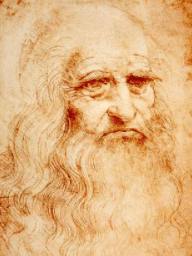
The self-portrait is by Leonardo da Vinci (1450 -1519) who had an amazing range of interest from botany and anatomy to mathematics and art. He painted the Mona Lisa and The Last Supper.
One of his dreams was to be able to fly. He spent years observing birds in flight and designed a flying machine.
He signed his name Leonardo da Vinci disciple of experiment.
Q. What do you know about Leonardo da Vinci?

Direction: Look at this picture and study the extract carefully and answer ANY THREE of the following questions by choosing the correct option:
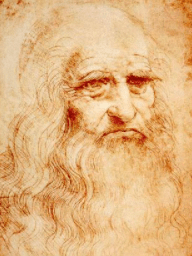
The self-portrait is by Leonardo da Vinci (1450 -1519) who had an amazing range of interest from botany and anatomy to mathematics and art. He painted the Mona Lisa and The Last Supper.
One of his dreams was to be able to fly. He spent years observing birds in flight and designed a flying machine.
He signed his name Leonardo da Vinci disciple of experiment.
Q. What was one of his dreams?

Direction: Look at this picture and study the extract carefully and answer ANY THREE of the following questions by choosing the correct option:

The self-portrait is by Leonardo da Vinci (1450 -1519) who had an amazing range of interest from botany and anatomy to mathematics and art. He painted the Mona Lisa and The Last Supper.
One of his dreams was to be able to fly. He spent years observing birds in flight and designed a flying machine.
He signed his name Leonardo da Vinci disciple of experiment.
Q. Name the world-famous paintings made by Leonardo da Vinci?
Direction: Read the following extract carefully and answer ANY THREE of the following questions by choosing the correct option:
In 1517, a young German Monk called Martin Luther (1483 – 1546) launched a campaign against the Catholic Church and argued that a person did not need priests to establish contact with God. He asked his followers to have complete faith in God, for faith alone could guide them to the right life and entry into heaven. This movement - called the Protestant Reformation - led to the churches in Germany and Switzerland breaking their connection with the Pope and the Catholic Church. In Switzerland, Luther’s ideas were popularized by Ulrich Zwingli (1484-1531) and later by Jean Calvin (1509 – 64). Backed by merchants, the reformers had greater popular appeal in towns, while in rural area the Catholic Church managed to retain its influence. Other German reformers, like the Anabaptists, were even more radical: they blend it the idea of salvation with the end of all forms of social oppression. They said that since God had created all people as equal, they were not expected to pay taxes and had the right to choose their priests. This appealed to peasants oppressed by feudalism.
Q. According to the given information who was Martin Luther?
Direction: Read the following extract carefully and answer ANY THREE of the following questions by choosing the correct option:
In 1517, a young German Monk called Martin Luther (1483 – 1546) launched a campaign against the Catholic Church and argued that a person did not need priests to establish contact with God. He asked his followers to have complete faith in God, for faith alone could guide them to the right life and entry into heaven. This movement - called the Protestant Reformation - led to the churches in Germany and Switzerland breaking their connection with the Pope and the Catholic Church. In Switzerland, Luther’s ideas were popularized by Ulrich Zwingli (1484-1531) and later by Jean Calvin (1509 – 64). Backed by merchants, the reformers had greater popular appeal in towns, while in rural area the Catholic Church managed to retain its influence. Other German reformers, like the Anabaptists, were even more radical: they blend it the idea of salvation with the end of all forms of social oppression. They said that since God had created all people as equal, they were not expected to pay taxes and had the right to choose their priests. This appealed to peasants oppressed by feudalism.
Q. Who argued that a person did not need Priests to establish contact with God?
Direction: Read the following extract carefully and answer ANY THREE of the following questions by choosing the correct option:
In 1517, a young German Monk called Martin Luther (1483 – 1546) launched a campaign against the Catholic Church and argued that a person did not need priests to establish contact with God. He asked his followers to have complete faith in God, for faith alone could guide them to the right life and entry into heaven. This movement - called the Protestant Reformation - led to the churches in Germany and Switzerland breaking their connection with the Pope and the Catholic Church. In Switzerland, Luther’s ideas were popularized by Ulrich Zwingli (1484-1531) and later by Jean Calvin (1509 – 64). Backed by merchants, the reformers had greater popular appeal in towns, while in rural area the Catholic Church managed to retain its influence. Other German reformers, like the Anabaptists, were even more radical: they blend it the idea of salvation with the end of all forms of social oppression. They said that since God had created all people as equal, they were not expected to pay taxes and had the right to choose their priests. This appealed to peasants oppressed by feudalism.
Q. Which of the following is the correct statement?
Direction: Read the following extract carefully and answer ANY THREE of the following questions by choosing the correct option:
In 1517, a young German Monk called Martin Luther (1483 – 1546) launched a campaign against the Catholic Church and argued that a person did not need priests to establish contact with God. He asked his followers to have complete faith in God, for faith alone could guide them to the right life and entry into heaven. This movement - called the Protestant Reformation - led to the churches in Germany and Switzerland breaking their connection with the Pope and the Catholic Church. In Switzerland, Luther’s ideas were popularized by Ulrich Zwingli (1484-1531) and later by Jean Calvin (1509 – 64). Backed by merchants, the reformers had greater popular appeal in towns, while in rural area the Catholic Church managed to retain its influence. Other German reformers, like the Anabaptists, were even more radical: they blend it the idea of salvation with the end of all forms of social oppression. They said that since God had created all people as equal, they were not expected to pay taxes and had the right to choose their priests. This appealed to peasants oppressed by feudalism.
Name the person who was responsible for / behind the popular rise of Martin Luther’s ideas:
Direction: Study the given picture from Changing Cultural Traditions carefully and answer ANY THREE questions from the below-mentioned questions with correct options:
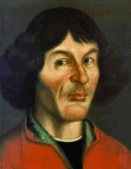
Q. Name the famous person shown in the picture:
Direction: Study the given picture from Changing Cultural Traditions carefully and answer ANY THREE questions from the below-mentioned questions with correct options:
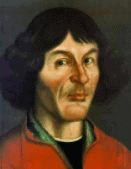
Q. Copernicus was a devout Christian.
Direction: Study the given picture from Changing Cultural Traditions carefully and answer ANY THREE questions from the below-mentioned questions with correct options:
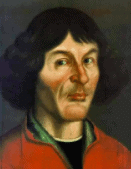
Q. Copernicus asserted that the planets including earth revolve around Sun.
Direction: Study the given picture from Changing Cultural Traditions carefully and answer ANY THREE questions from the below-mentioned questions with correct options:
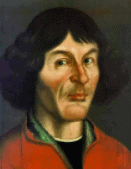
Q. Joachim Rheticus was a follower of Copernicus. He handed over:
Direction: Read the following extract carefully and answer ANY THREE of the following questions by choosing the correct option:
Formal education was not the only way through which humanist shaped the mind of their age. Art, architecture and books were wonderfully effective in transmitting humanist ideas.
Artists were inspired by studying works of the past. The material remains of Roman culture were sought with as much excitement as ancient text: a thousand years after the fall of Rome, fragments of art were discovered in the ruins of ancient Rome and other deserted cities. Their admiration for the figures of perfectly proportioned men and women sculpted so many centuries ago, made Italian sculptors want to continue that tradition. In 1416, Donatello (1386-1456) broke new ground with his life-like statues.
Q. After studying the extract, what do you think what are the main factors which effectively transmit humanist ideas?
Direction: Read the following extract carefully and answer ANY THREE of the following questions by choosing the correct option:
Formal education was not the only way through which humanist shaped the mind of their age. Art, architecture and books were wonderfully effective in transmitting humanist ideas.
Artists were inspired by studying works of the past. The material remains of Roman culture were sought with as much excitement as ancient text: a thousand years after the fall of Rome, fragments of art were discovered in the ruins of ancient Rome and other deserted cities. Their admiration for the figures of perfectly proportioned men and women sculpted so many centuries ago, made Italian sculptors want to continue that tradition. In 1416, Donatello (1386-1456) broke new ground with his life-like statues.
Q. Which of the following was perfectly related to the thoughts of Humanism?
Direction: Read the following extract carefully and answer ANY THREE of the following questions by choosing the correct option:
Formal education was not the only way through which humanist shaped the mind of their age. Art, architecture and books were wonderfully effective in transmitting humanist ideas.
Artists were inspired by studying works of the past. The material remains of Roman culture were sought with as much excitement as ancient text: a thousand years after the fall of Rome, fragments of art were discovered in the ruins of ancient Rome and other deserted cities. Their admiration for the figures of perfectly proportioned men and women sculpted so many centuries ago, made Italian sculptors want to continue that tradition. In 1416, Donatello (1386-1456) broke new ground with his life-like statues.
Q. Who was Donatello?














